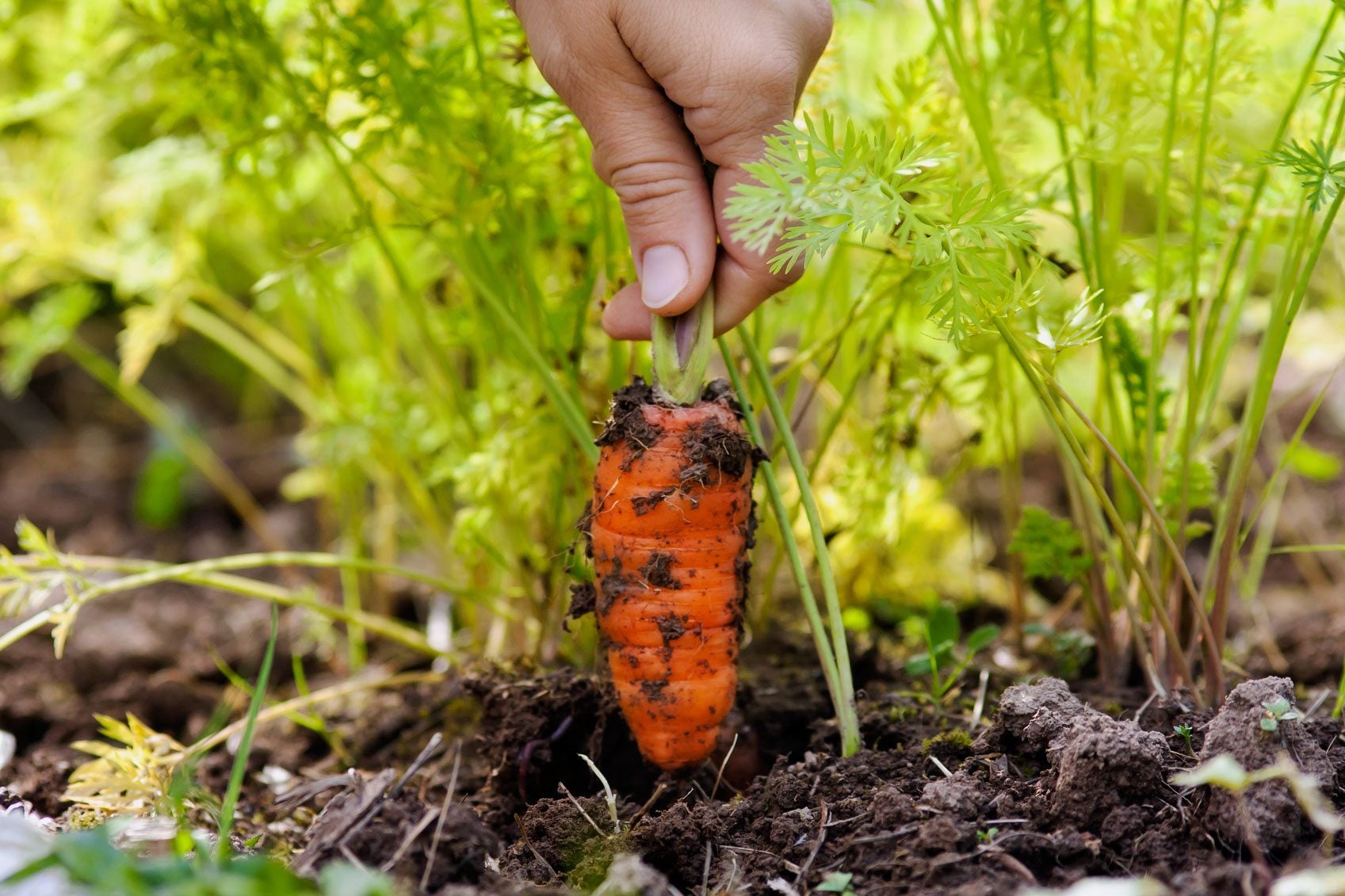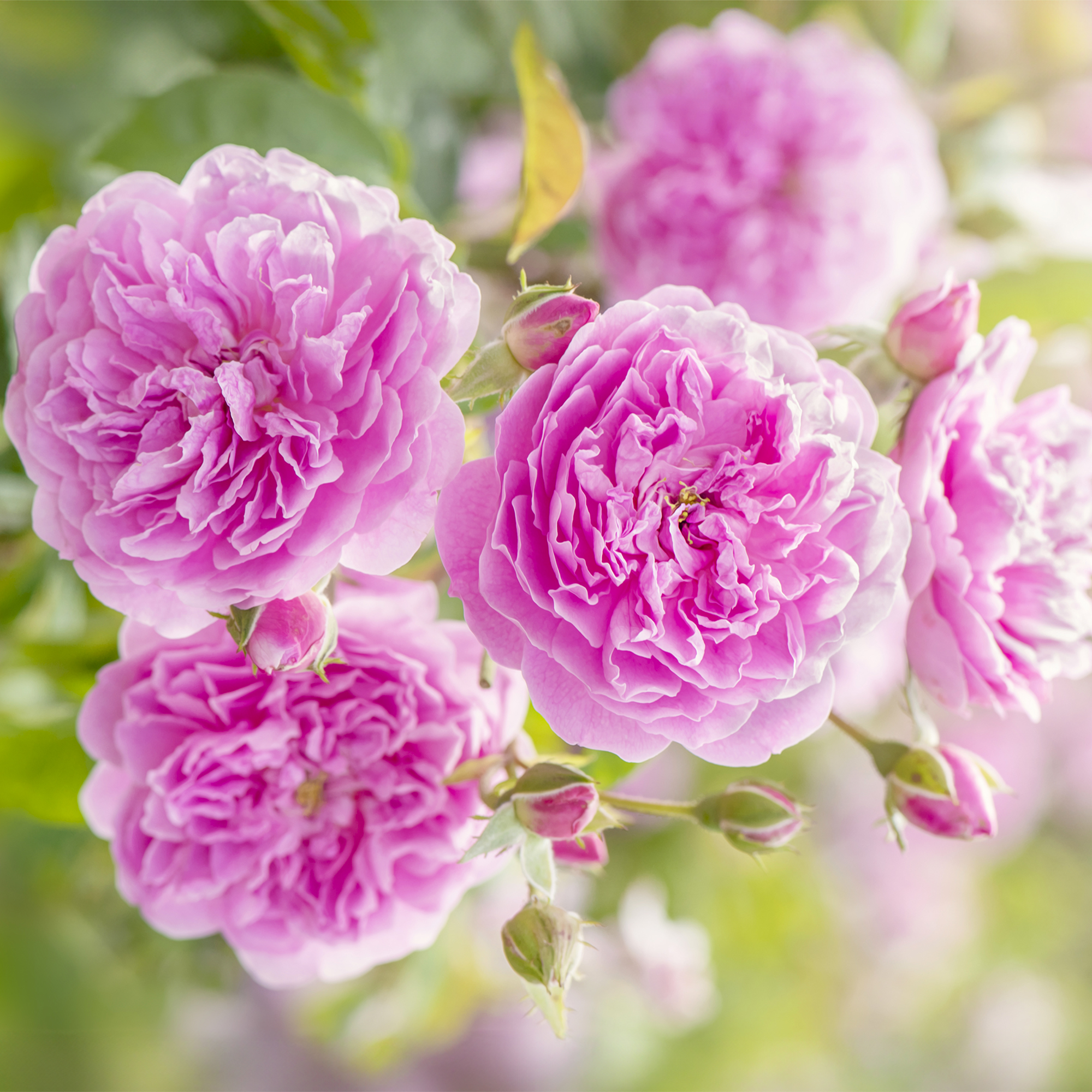How To Tell When Carrots Are Ready To Harvest

Carrots are a universally popular crop grown for their thick roots that can be eaten cooked or raw. The question is how to know when carrots are ready for harvest. If harvesting carrots has you flummoxed, read on to learn how and when to pick carrots.
Carrots are easy to grow in a garden with deep, loose soil, and as you may have guessed from the name, they are packed with beta carotene. A half-cup (118 mL) serving gives you four times the Recommended Daily Allowance (RDA) of vitamin A in the form of beta carotene. Growing and picking carrots is a great way to take advantage of their nutritional benefits.
In mild climates, grow this nutritious vegetable almost year-round by planting successive crops and using heavy mulch to protect them from winter temperatures. If your soil is hard or heavy, grow short varieties to get the most come carrot harvest time.
About Growing Carrots
Carrots are a cool season, hardy biennial that can be sown as soon as the garden can be worked in the spring. Prior to sowing the seed, prepare the soil. Loosen the soil down to 8-9 inches (20-23 cm), breaking up any clods to allow for the full development of the carrot’s roots.
While organic material may be added to the planting bed, resist the temptation to amend with an organic containing wood chips or other large debris, as it will affect root growth and result in forked or twisted roots.
Once the bed is ready for planting, sow seeds ¼ to ½ inch (0.5-1 cm) deep in rows that are 12-18 inches (30-46 cm) apart. Carrot seeds are very tiny so it's difficult not to over sow, but try not to sow more than 2-3 seeds per inch (2.5 cm). Some seed sellers coat the small seeds in clay or other material which is helpful when using a seeder, although more expensive than non pelleted seeds.
Seeds should germinate within a couple of weeks. Thin the seedlings when they are an inch (2.5 cm) tall to three seedlings per inch for finger carrots, 1-2 seedlings per inch for young carrots, and one seedling per 1-2 inches for the larger varieties such as Chantenay or Danvers.
Gardening tips, videos, info and more delivered right to your inbox!
Sign up for the Gardening Know How newsletter today and receive a free copy of our e-book "How to Grow Delicious Tomatoes".
How to Tell When Carrots are Ready to Harvest
So, when are the carrots ready to be harvested? The maturation date written on the seed packet for each variety of carrot is a good place to start. Seed companies are usually pretty close -- within about 10 days depending upon weather, growing conditions, etc. Making a notation on a calendar is a good way to remind yourself not to miss the date.
Baby carrots are usually ready to harvest 50 to 60 days from the planting date. Mature carrots need a few more weeks and are usually ready in about 75 days. Most carrots are ready to pick when the shoulders are 1/2 to 3/4 inch (1.2-2 cm) in diameter, but again, there is a lot of variation depending on the variety.
Another indicator that it might be time to harvest carrots lies above ground. If the greens of the carrot plants are about 10-12 inches (25-30 cm) tall, the carrot is probably mature and ready to harvest.
Also, often although not always, the green of mature carrot tops may peek out from the soil; another indicator that the carrots are ready to be lifted. This area of the carrot is called the “shoulder.” If you push away the soil at the top of the carrot beneath the greens and can feel a shoulder, it is likely that it is time to harvest.
When to Harvest Carrots
The answer to this question depends on whether you're growing a spring or fall crop. Carrots planted in the spring should be picked before the heat of summer really kicks in, as prolonged heat can make the carrots tough.
If you're planting your carrots in late summer for a fall crop, wait until after the first frost or two. Frost is a sign to the plant that winter is coming, and that it's time to start storing sugar to last it until spring. This sugar greatly improves the flavor of the carrot. After the first frost, cover your carrots with a thick layer of mulch to keep them from freezing, and let those sugars build up.
How to Harvest Carrots
Now that you know when to pick carrots, you’ll want to know the best procedure for how to harvest carrots from the garden. Grabbing the foliage and giving it a pull often results in a handful of leaves with no carrot attached. It’s better to dig carefully around the root or lever up with a garden fork and then remove it from the soil.
Cut off the green tops 1/4 to 1/2 inch (6-12 mm) from the top of the carrot and rinse and dry the roots before storage.
All carrots may not be ready at the same time. Bypass small carrots and allow them to grow. This can extend a harvest period by 3-4 weeks.
When deciding when to pick carrots, consider how much you can use in a two- to four-week period of time. Carrots can be left in the ground for an additional four weeks or even longer in winter. Make sure you harvest the last of the carrots before the ground freezes solid.
How to Store Freshly Harvested Carrots
When carrot harvest time arrives, have a storage plan in mind. Store clean carrots with the green tops removed in the vegetable bin of the refrigerator for two to four weeks. They will keep in a bucket of sand in a cool cellar for several months. Don’t store carrots near apples or pears. These fruits produce a gas that gives the carrots a bitter taste. Carrots can also be canned, frozen, or pickled for longer storage.
Carrot greens can be eaten or composted. Topped carrots store much longer than those with the tops on: for 4-5 months at 32 F (0 C) and 90-95% relative humidity.
Many gardeners overwinter carrots in the garden covered with heavy mulch and harvest as needed. Use straw or a thick layer of dried leaves, row cover or low tunnel to cover the carrots. How long the carrots can be stored in this manner depends upon the weather in your area.

Jackie Carroll has written over 500 articles for Gardening Know How on a wide range of topics.
- Amy GrantWriter
-
 What’s Wrong With Your Azaleas? Identify, Tackle And Prevent 6 Common Azalea Pests
What’s Wrong With Your Azaleas? Identify, Tackle And Prevent 6 Common Azalea PestsIf you’ve spotted signs of azalea leaf damage, don’t panic – here’s how to identify the most common azalea pests so you can take action swiftly and keep plants healthy
-
 How Much Sun Do Roses Need To Grow? Understanding Rose Light Requirements
How Much Sun Do Roses Need To Grow? Understanding Rose Light RequirementsDiscover how much sunlight your roses really need to grow strong, bloom beautifully, and stay healthy all season long.